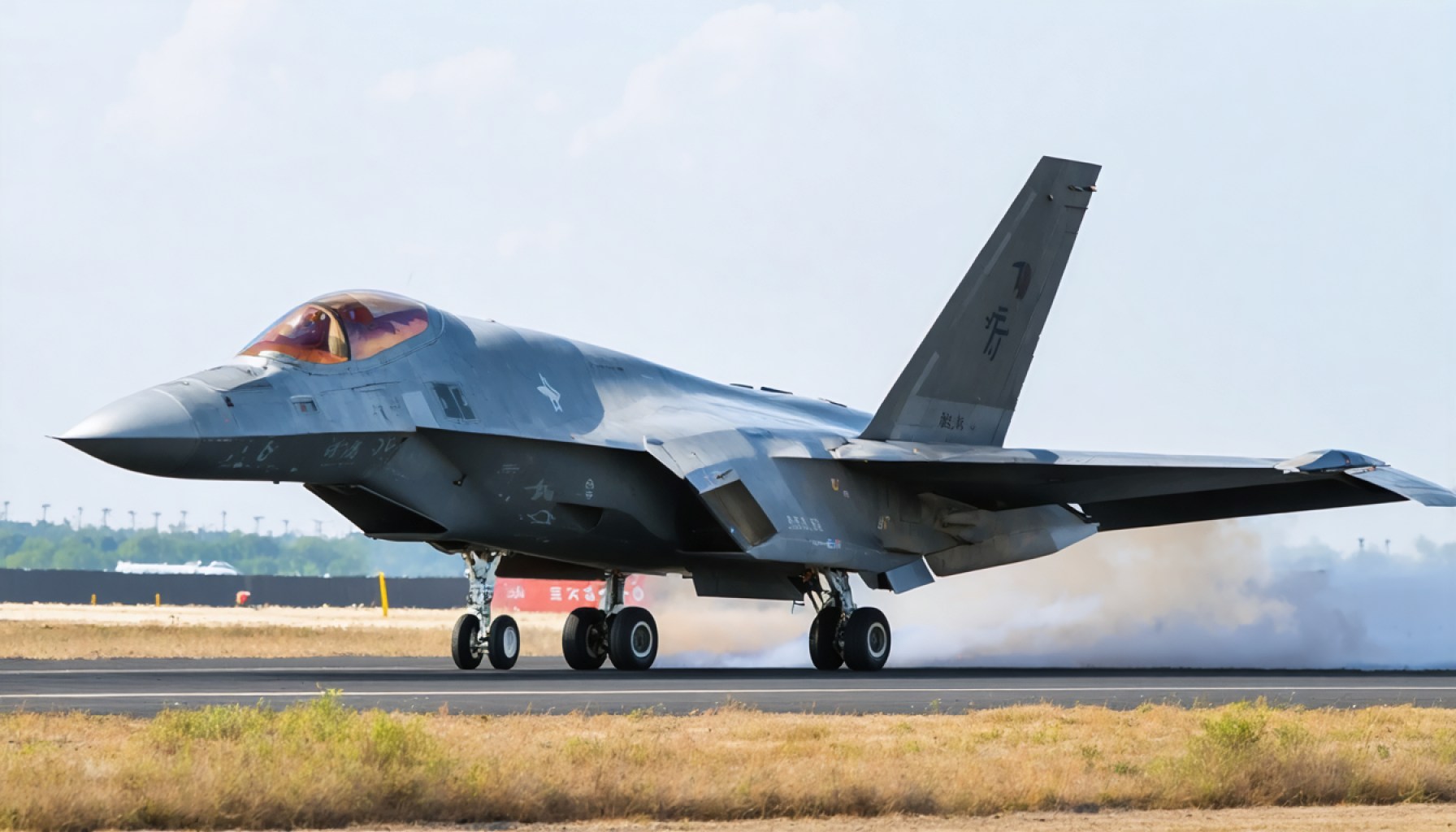- China’s new sixth-generation fighter jet introduces groundbreaking technologies like stealth, AI, and hypersonic weapons, signaling a shift in global military power dynamics.
- This development poses a significant challenge to the US’s long-standing aerospace defense leadership, sparking concerns among American defense contractors.
- Lockheed Martin, a major US defense contractor, faces increased pressure with its stock experiencing volatility due to potential shifts in global military spending.
- Analysts predict a potential reallocation in US defense budgets to enhance technological advancements and maintain competitive parity with China.
- The global defense industry is gearing up for accelerated innovation to address emerging challenges in aerial warfare technology.
China’s unveiling of its sixth-generation fighter jet has sent ripples through the defense industry, particularly impacting Lockheed Martin’s stock. This revelation not only marks a significant leap in military aviation technology but also challenges the US’s dominance in aerospace defense.
The Global Arms Race Intensifies: China’s advanced fighter, reportedly designed with cutting-edge technologies like stealth capabilities, AI integration, and hypersonic weapons, has captured global attention. Beijing’s aggressive push into next-gen military tech is a clear signal of its ambition to redefine air power in the coming decades. This development has set off alarm bells within Washington and among U.S. defense contractors.
Impact on American Defense Contractors: Lockheed Martin, the developer of the F-35 and a pivotal player in the US defense sector, has particularly felt the pressure. As investors worry about potential shifts in global military contracts towards Chinese alternatives, Lockheed’s stock has experienced volatility. Analysts suggest that China’s advancements could potentially lead to a shift in defense spending priorities in the U.S., prompting further innovation from American companies to maintain their competitive edge.
The Road Ahead: With China’s revelation reshaping the landscape of aerial combat technology, global military strategies may undergo significant transformations. For Lockheed Martin and its counterparts, the primary focus will be on accelerating innovation to counterbalance any competitive disadvantages. As the defense industry braces for a new era of technological warfare, the race to stay ahead of adversaries is more critical than ever.
China’s Sixth-Gen Fighter Jet: A Game-Changer in Global Defense Dynamics
What Features Make China’s Sixth-Generation Fighter Jet Stand Out?
China’s unveiling of its sixth-generation fighter jet introduces several groundbreaking features that set it apart from existing military aircraft. These include:
– Stealth Capabilities: Enhanced stealth technology allows the jet to evade radar detection more effectively, offering a tactical advantage during missions.
– AI Integration: The incorporation of artificial intelligence aids in real-time decision-making processes and optimal performance management, improving both combat efficiency and pilot safety.
– Hypersonic Weapons: The jet is reportedly equipped with hypersonic weaponry, capable of striking targets at speeds exceeding five times the speed of sound, significantly shortening reaction times for adversaries.
These innovations position China at the forefront of military aviation and pose a formidable challenge to established defense leaders like the United States.
How Are Global Defense Markets Responding to China’s Advancements?
The geopolitical implications of China’s sixth-gen fighter are substantial, impacting defense markets worldwide:
– Market Forecasts: Analysts predict a diversification of military procurement by various nations, seeking to either acquire similar technologies or develop countermeasures.
– Comparisons with U.S. Technology: While America’s F-35 retains a strong reputation, China’s advancements prompt a reevaluation of current technologies and future investments in defense by both U.S. allies and rivals.
– Sustainable Defense Spending: The increased competition may lead to a rise in global defense budgets, focusing more on sustainable and long-lasting military technologies, including cyber-defense and unmanned systems.
What Does This Mean for the Future of Defense Innovation?
China’s leap into sixth-generation technologies signals a new era for defense innovation:
– Accelerated Innovation: U.S. defense contractors like Lockheed Martin are likely to intensify their R&D efforts, aiming for breakthrough technologies in AI, quantum computing, and autonomous systems.
– Security and Compatibility: As new technologies emerge, a focus on enhancing security protocols and ensuring interoperability with existing NATO systems becomes paramount to maintain defense alliances.
– Predictions for Industry Trends: We might see a more pronounced trend toward joint ventures and international collaboration to pool resources and expertise in developing next-gen defense tech.
For further insights into the global defense industry, companies like Lockheed Martin remain pivotal in understanding the competitive dynamics and future trajectories.














